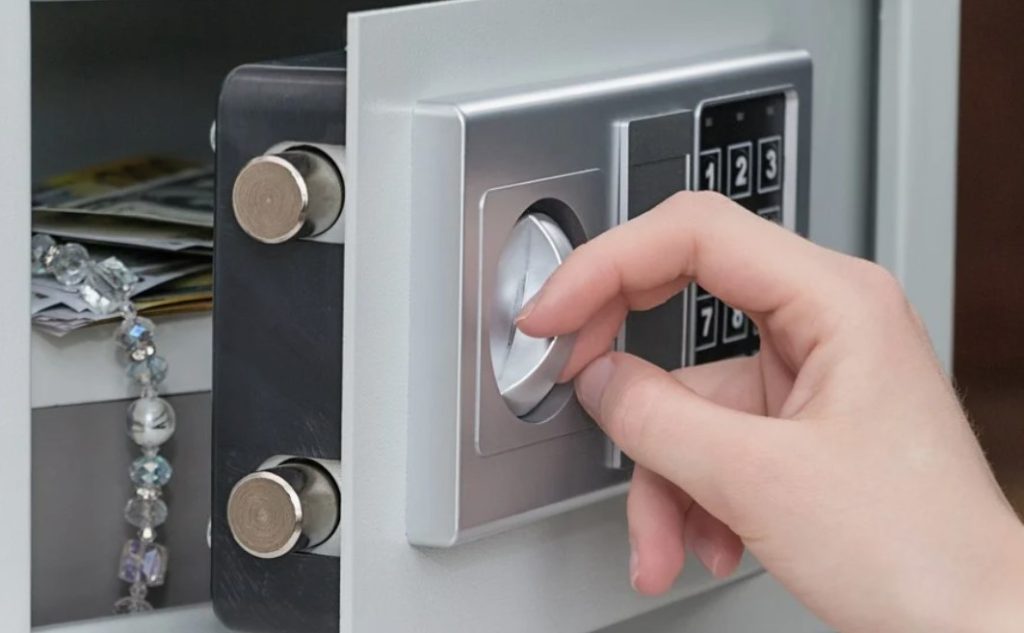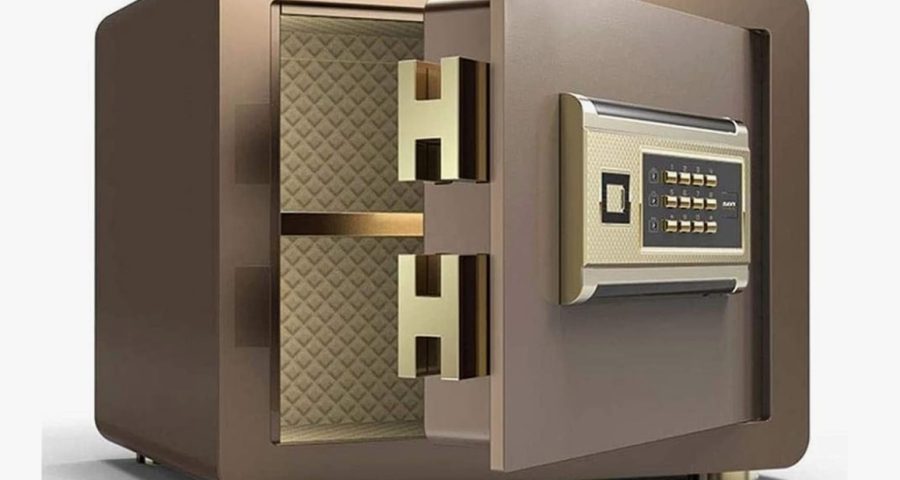The reliability of a safe is not solely determined by its structural design but significantly by the burglary resistance class of its lock. Safe locks, especially those in luxury home safes, are classified into four main types: “A,” “B,” “C,” and “D.” These classifications are determined by two primary criteria: the number of combinations and the degree of burglary resistance.
Number of Combinations
For electronic locks, the concept is straightforward: the more digits in the secret code, the greater the number of possible combinations, making it exponentially harder to guess the correct code. The possible combinations can run into millions, ensuring high security.
In the case of key locks, the combination refers to the number of unique keys that could potentially open the lock. This indicates the number of keys that would need to be tried to find the correct one.
Degree of Resistance
The degree of resistance is expressed by the “E” coefficient, a measure of the lock’s resilience to burglary attempts, factoring in the time and effort required to break it. The type of tool used in the burglary attempt also influences this coefficient.

Classification of Burglary Resistance
1. Class “A”
– Combinations: No less than 80,000
– Coefficient E: 30
– Protection: Against mechanical tools
2. Class “B”
– Combinations: At least 100,000
– Coefficient E: 60
– Protection: Against mechanical tools
3. Class “C”
– Combinations: At least 1,000,000
– Coefficient E: 120
– Protection: From mechanical and thermal tools
4. Class “D”
– Combinations: At least 30,000,000
– Coefficient E: 620
– Protection: From mechanical and thermal tools, as well as strong electromagnetic fields
Types of Safe Locks
Key Locks
A key lock is a traditional and cost-effective locking mechanism for safes. Typically, these locks use lever mechanisms, where the lock’s security is dependent on the number of levers inside (a high-quality lock should have at least six levers).
Pros:
– Simple to use
– Reliable and time-tested
– No need for batteries or electrical power
Cons:
– Keys can be lost or stolen
– Limited combination possibilities compared to electronic locks
– Vulnerable to lock picking and key duplication
Mechanical Locks
Mechanical combination locks use a rotary dial to input a code combination. They are highly precise and have been trusted for decades.
Pros:
– High precision and reliability
– No electrical power required
– Difficult to hack electronically
Cons:
– Can be cumbersome to use
– Limited to a finite number of combinations
– Requires memorization of the combination code

Electronic Locks
Electronic locks are modern, versatile, and widely popular. They can be found in various classes and price ranges, often featuring additional functions like delayed opening, emergency opening, and anti-picking protection.
Pros:
– High security with millions of possible combinations
– Additional features like Time Lock, Master Lock, and auto-lock
– Easy to use and program
Cons:
– Requires batteries or electrical power
– Can be vulnerable to hacking if not properly secured
– May malfunction if the electronics fail
Biometric Locks
Biometric locks use fingerprint recognition technology, often supplemented with a numeric keypad. They offer a high level of security by combining biometric data with traditional codes.
Pros:
– Extremely secure with dual authentication (fingerprint + code)
– Convenient and quick access
– Eliminates the need to remember codes or carry keys
Cons:
– Expensive compared to other types
– Requires batteries or electrical power
– Biometric sensors may fail or become less accurate over time
Detailed Insights on Each Type of Safe Lock
Key Locks in Depth
Key locks, often referred to as lever locks, are the epitome of simplicity and reliability. The mechanism involves a set of levers, and the correct key aligns these levers to allow the lock to open. The security of these locks is directly proportional to the number of levers; more levers mean higher security.
Advanced Features:
– Lever Design: High-quality key locks feature complex lever designs to thwart picking attempts.
– Key Duplication Prevention: Some key locks come with patented key designs to prevent unauthorized key duplication.
Considerations:
– Maintenance: Regular lubrication and maintenance are required to keep the lock in good working condition.
– Key Management: Proper management and storage of keys are crucial to prevent unauthorized access.
Mechanical Locks in Depth
Mechanical locks are known for their durability and precision. They use a series of discs or wheels that must be aligned to the correct combination to release the locking mechanism.
Advanced Features:
– Dial Design: High-contrast dials with tactile feedback improve usability.
– Combination Complexity: Multi-disc designs increase the number of possible combinations, enhancing security.
Considerations:
– Learning Curve: Users need to be familiar with the correct dialing sequence, which might take some practice.
– Regular Checks: Periodic checks are necessary to ensure the combination mechanism remains precise and functional.
Electronic Locks in Depth
Electronic locks represent the pinnacle of modern locking technology. They use a digital keypad for combination entry and often include microprocessors to handle complex security algorithms.
Advanced Features:
– Audit Trails: Many electronic locks can log access attempts, providing a record of who accessed the safe and when.
– Multiple User Codes: These locks can often store multiple user codes, making them suitable for business use where multiple users need access.
Considerations:
– Battery Life: Regular monitoring of battery levels is essential to prevent lockouts.
– Firmware Updates: Keeping the lock’s firmware updated ensures it remains secure against new hacking methods.
Biometric Locks in Depth
Biometric locks utilize fingerprint recognition technology, providing an unmatched level of security. They are often combined with electronic locks to offer dual-factor authentication.
Advanced Features:
– False Acceptance Rate (FAR): High-quality biometric locks have a very low FAR, minimizing the chances of unauthorized access.
– User Capacity: Some biometric locks can store multiple fingerprints, allowing access for several authorized users.
Considerations:
– Sensor Maintenance: The fingerprint sensor must be kept clean for accurate recognition.
– Backup Access: Ensure there is a reliable backup access method (e.g., numeric keypad) in case the biometric sensor fails.
Choosing the Right Safe Lock
When selecting a safe lock, consider the following factors:
– Security Needs: Assess the level of security required based on the value of the items being protected.
– Ease of Use: Consider who will be using the safe and their familiarity with different types of locks.
– Budget: Factor in the initial cost of the lock as well as any ongoing maintenance costs.
– Additional Features: Determine if features like audit trails, multiple user codes, or biometric access are necessary for your needs.
Conclusion
Safe locks are a critical component of any secure storage solution. By understanding the different types of locks and their respective pros and cons, you can make an informed decision that balances security, usability, and cost. Whether opting for a traditional key lock, a mechanical lock, an advanced electronic lock, or a cutting-edge biometric lock, each type offers unique benefits that cater to different security requirements.

I like to give reasonable advice on budgeting to people with any income level. I currently live in Portland, Oregon, and am available for freelance assignments and speaking engagements.
